GM Crushes Estimates by Selling Americans Gas Guzzling Trucks
If you build it, he will come.
It turns out that this is not just advice for summoning ghosts to a cornfield ballpark but also applies to auto manufacturers hoping car buyers will keep showing up at dealer lots. General Motors on Tuesday reported a 24 percent rise in first-quarter profit to nearly $3 billion. Earnings per share hit $2.62, far above the consensus forecast of $2.12.
 A GMC pickup truck is displayed for sale on a lot at a General Motors dealership in Austin, Texas, on January 5, 2023. (Brandon Bell/Getty Images)
A GMC pickup truck is displayed for sale on a lot at a General Motors dealership in Austin, Texas, on January 5, 2023. (Brandon Bell/Getty Images)
The company also lifted its profit outlook for the year, saying it expects adjusted earnings before interest and taxes of between $12.5 billion and $14.5 billion. The company's earlier guidance had suggested adjusted pre-tax and interest earnings of around $12 billion to $14 billion. Wall Street had been forecasting around $12.8 billion for the year.
Shares rose by around 5.5 percent on Tuesday. The Detroit automaker's stock price is up by around 62 percent since its recent low in November.
The big driver of this five-month rally has been GM's pivot away from electric vehicles and autonomous driving cars that are adored by Washington, D.C.'s climate change lobby but have not caught on with U.S. consumers. At the end of November 2023, GM announced that it was going to return funds to shareholders that had previously been earmarked for EVs and autonomous vehicle development.
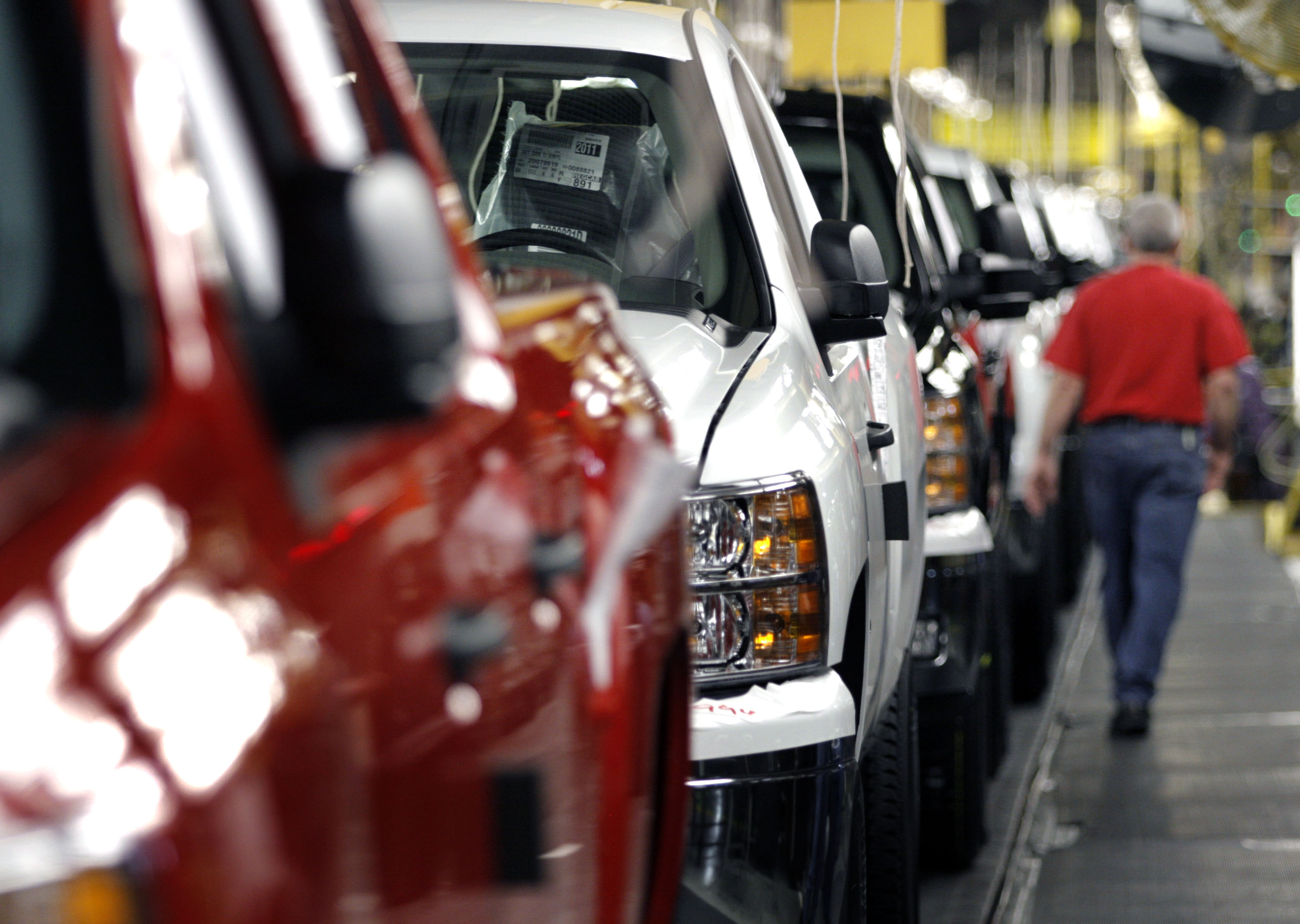 GMC pickup trucks are shown on the assembly line at the General Motors Flint Assembly Plant in Flint, Michigan, on January 24, 2011. (Bill Pugliano/Getty Images)
GMC pickup trucks are shown on the assembly line at the General Motors Flint Assembly Plant in Flint, Michigan, on January 24, 2011. (Bill Pugliano/Getty Images)
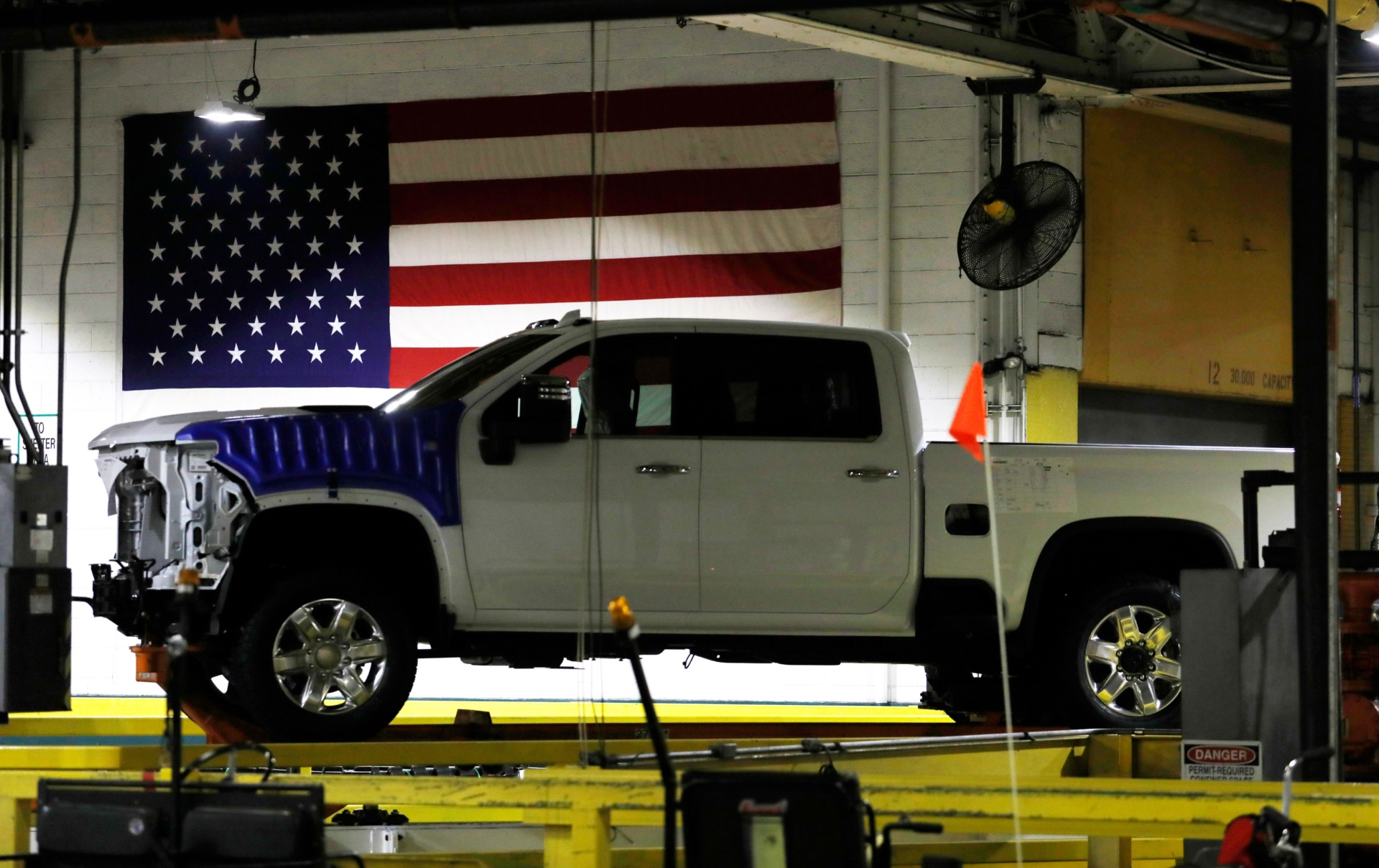 A pickup truck is shown on the assembly line at the General Motors Flint Assembly Plant in Flint, Michigan, on June 12, 2019. (JEFF KOWALSKY/AFP via Getty Images)
A pickup truck is shown on the assembly line at the General Motors Flint Assembly Plant in Flint, Michigan, on June 12, 2019. (JEFF KOWALSKY/AFP via Getty Images)
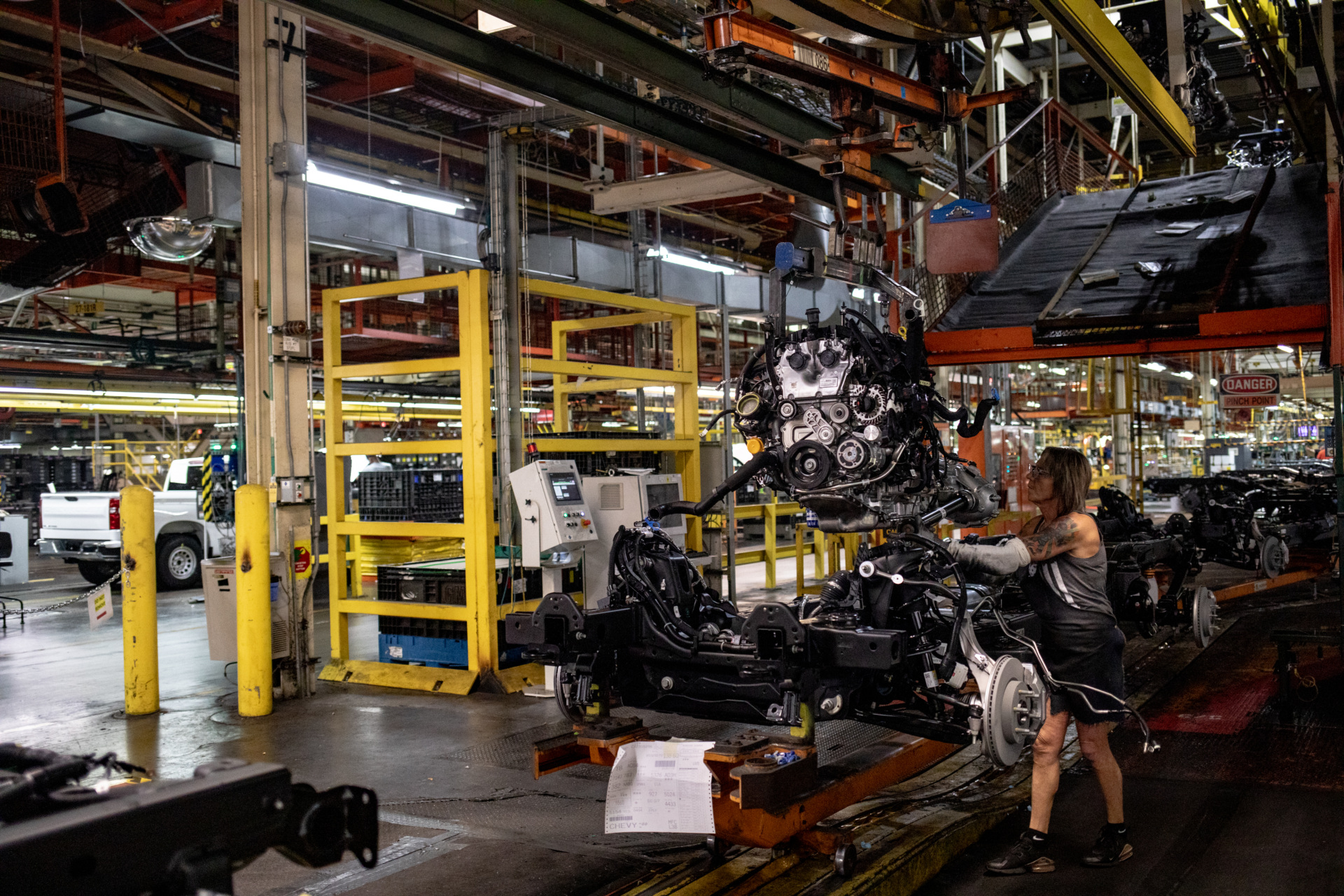 A gas-powered engine is lowered onto the frame of a vehicle at the General Motors Assembly Plant in Fort Wayne, Indiana, on April 9, 2024. (Emily Elconin/Bloomberg via Getty Images)
A gas-powered engine is lowered onto the frame of a vehicle at the General Motors Assembly Plant in Fort Wayne, Indiana, on April 9, 2024. (Emily Elconin/Bloomberg via Getty Images)
The move allowed GM to announced its largest stock buyback in many years, a $10 billion share repurchase plan that has reduced the share count and boosted earnings per share. It also is benefiting workers, allowing the company to better afford the $9.3 billion of additional labor costs it agreed to last year in the new contracts with the United Auto Workers.
The company now appears to be focused on selling customers the cars and trucks they want to drive instead of spending funds on developing the vehicles that Green New Deal activists think they should be driving. The first quarter's better-than-expected profits were driven by sales of gas-powered trucks and sports-utility vehicles, especially the Chevrolet Silverado--which competes with Ford's F-150 for the title of the all-American truck--and the GMC Sierra.
Americans Reject the Green New Deal for Cars
The rejection of the electric vehicle and climate change orthodoxy by American car-buyers is stark. Both the Silverado and the Sierra have been listed as some of the worst gas-guzzlers on the market. The 2023 Chevy Silverado ZR2 landed a place on the list of 12 "meanest" cars for the environment compiled by the American Council for an Energy-Efficient Economy. But Americans are buying the mean machines as fast as GM can assemble them.
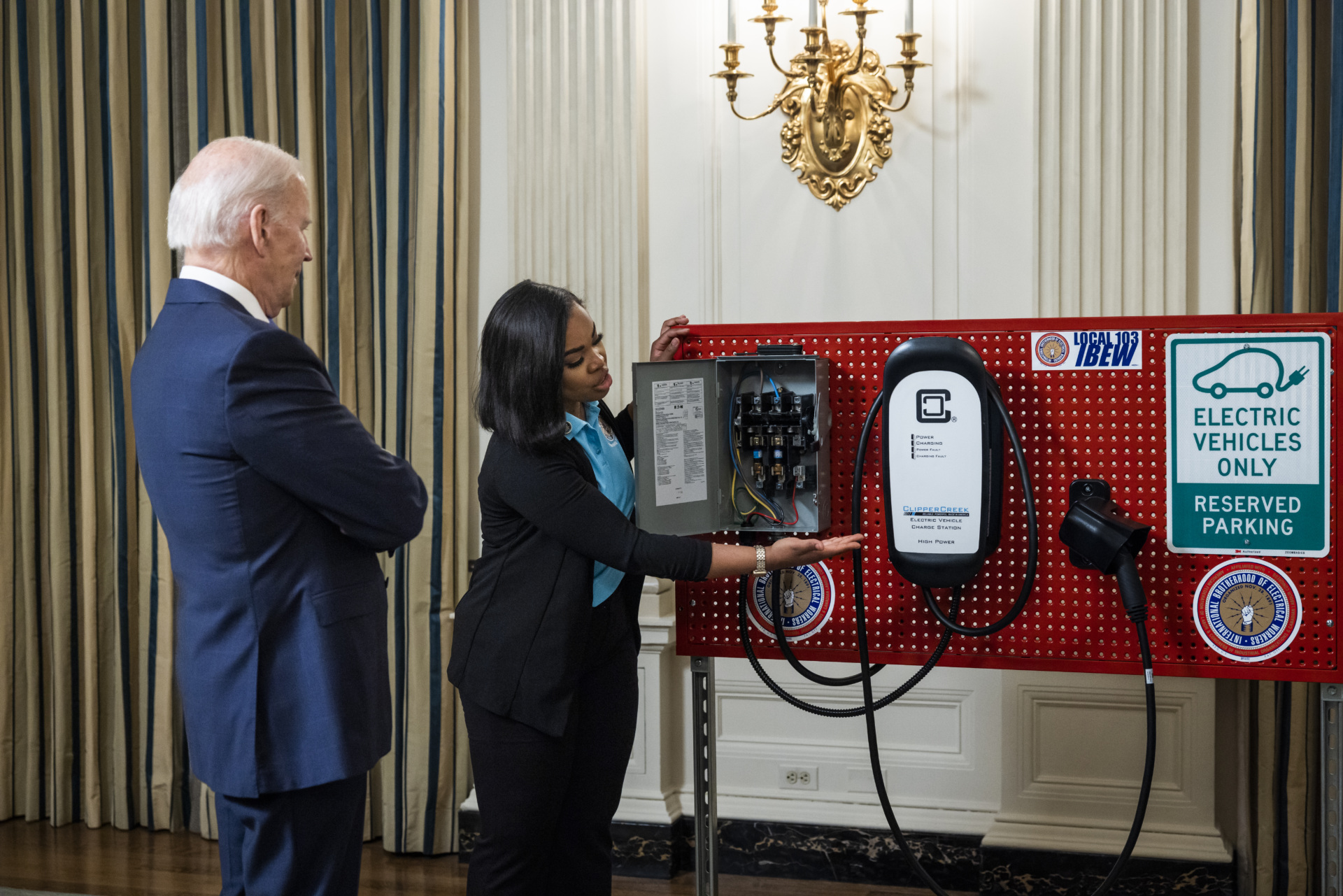 President Joe Biden watches an electric vehicle charger demonstration at the White House in Washington on Nov. 2, 2022. (Jim Lo Scalzo/EPA/Bloomberg via Getty Images)
President Joe Biden watches an electric vehicle charger demonstration at the White House in Washington on Nov. 2, 2022. (Jim Lo Scalzo/EPA/Bloomberg via Getty Images)
The turnaround for GM demonstrates how far off-base the climate change alarmists have been when it comes to business risk. For a decade or so, the green left has claimed that one of the biggest risks faced by American businesses was that consumers would inevitably become so concerned about climate change that they would suddenly stop spending money on emmission intensive products like combustion engine cars. Alternatively, lawmakers would pass laws forcing customers to transition away from fossil fuel consuming productions. The green left argued that the companies whose fortunes turned on selling or financing these products were unwittingly facing "transition risk" that needed to be disclosed to shareholders and closely monitored by financial regulators.
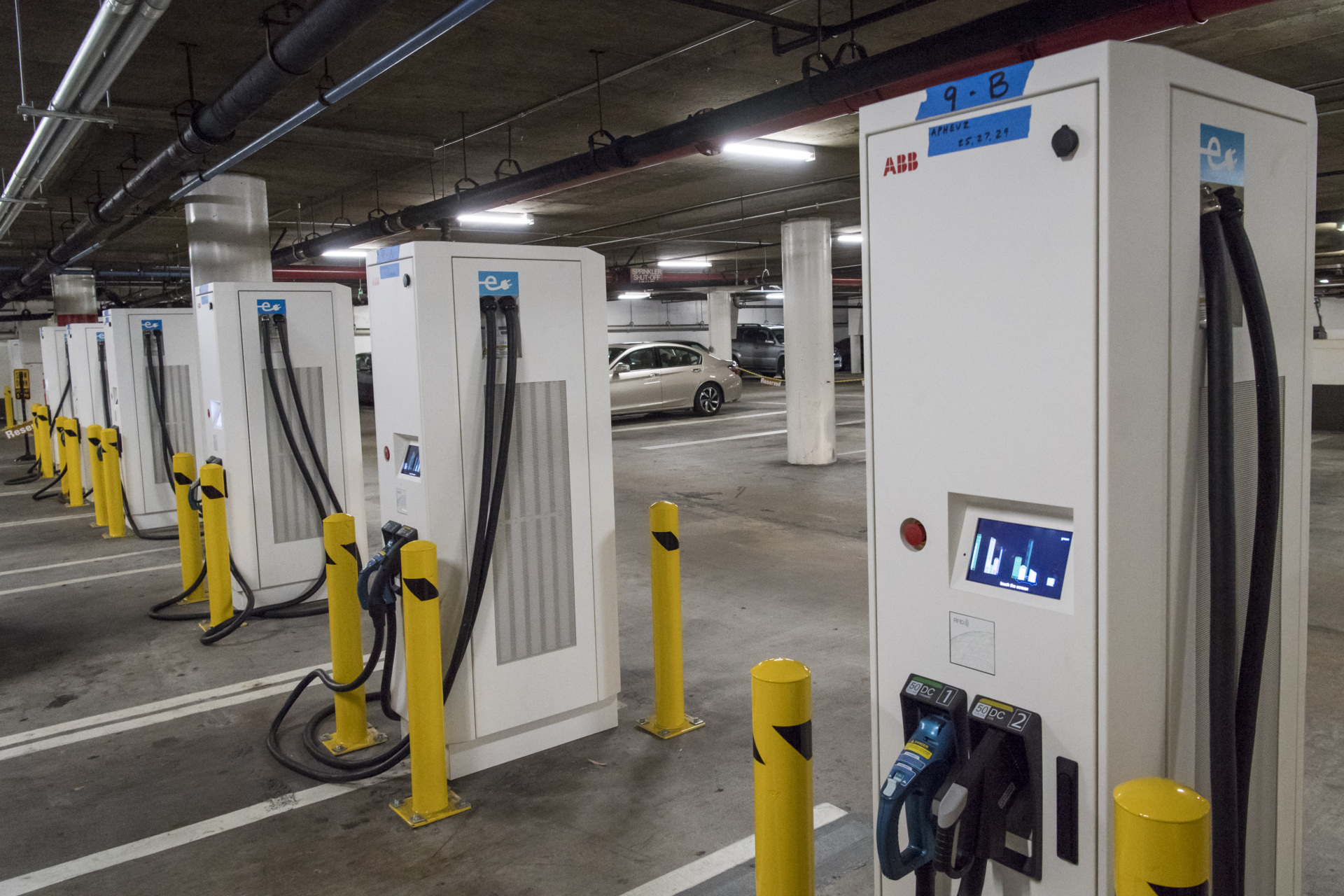 Unused electric vehicle charging stations stand in San Francisco, California, on July 2, 2018. General Motors has installed 18 fast chargers for its Cruise self-driving car unit in a parking facility on San Francisco's Embarcadero. (David Paul Morris/Bloomberg via Getty Images)
Unused electric vehicle charging stations stand in San Francisco, California, on July 2, 2018. General Motors has installed 18 fast chargers for its Cruise self-driving car unit in a parking facility on San Francisco's Embarcadero. (David Paul Morris/Bloomberg via Getty Images)
As it has turned out, the transition risk ran the other way. GM, Ford, and Stellantis all attempted to transition toward electric vehicles in anticipation of a turn in consumer preferences that not only never materialized but appears to be running in reverse. In part, this is cultural and political. Many of Detroit's customers now see EVs as leftwing totems, like COVID masks worn by pro-Hamas student protesters and professors on college campuses or No Home for Hate signs that signal loathing for conservatives.
But it is also a matter of practicality. The demands of keeping an electric vehicle charged are unwieldy for most Americans. The U.S. has a well-functioning system of fuel stations for gas-powered vehicles that is unlikely to be matched for electric vehicles for decades, particularly given the inflation-driven increase in the prices to build out EV infrastructure. The extremely low resale or trade-in values for electric cars is a big problem, especially in an era of higher interest rates.
The China Transition Risk Is the Real Cause for Concern
This does not mean that GM's management is not still plagued by the sort of delusions fitting for a company often referred to as "Government Motors." The company lost $106 million for the quarter in China, but chief executive Mary Barra reiterated GM's commitment to competing there. The lure is obvious: China is the world's biggest market for cars. But the notion that this presents a real opportunity for U.S. car makers is predicated on an unfounded faith that the communist regime in China would allow significant market share to be captured by a foreign manufacturer.
 General Motors CEO Mary Barra speaks at a media event before the Shanghai auto show in Shanghai, China, on April 19, 2015. (Tomohiro Ohsumi/Bloomberg via Getty Images)
General Motors CEO Mary Barra speaks at a media event before the Shanghai auto show in Shanghai, China, on April 19, 2015. (Tomohiro Ohsumi/Bloomberg via Getty Images)
The real transition risk GM faces is a transition of the U.S. economy away from China. In many ways, what happened after Russia's invasion of Ukraine is a dress rehearsal for what is likely to eventually happen between China and much of the rest of the developed world. There is a very good chance that trade will be cut off or greatly diminished, assets abandoned, and investments lost.
Analysts and investors should be asking GM what steps it is taking to deal with the China transition risk.
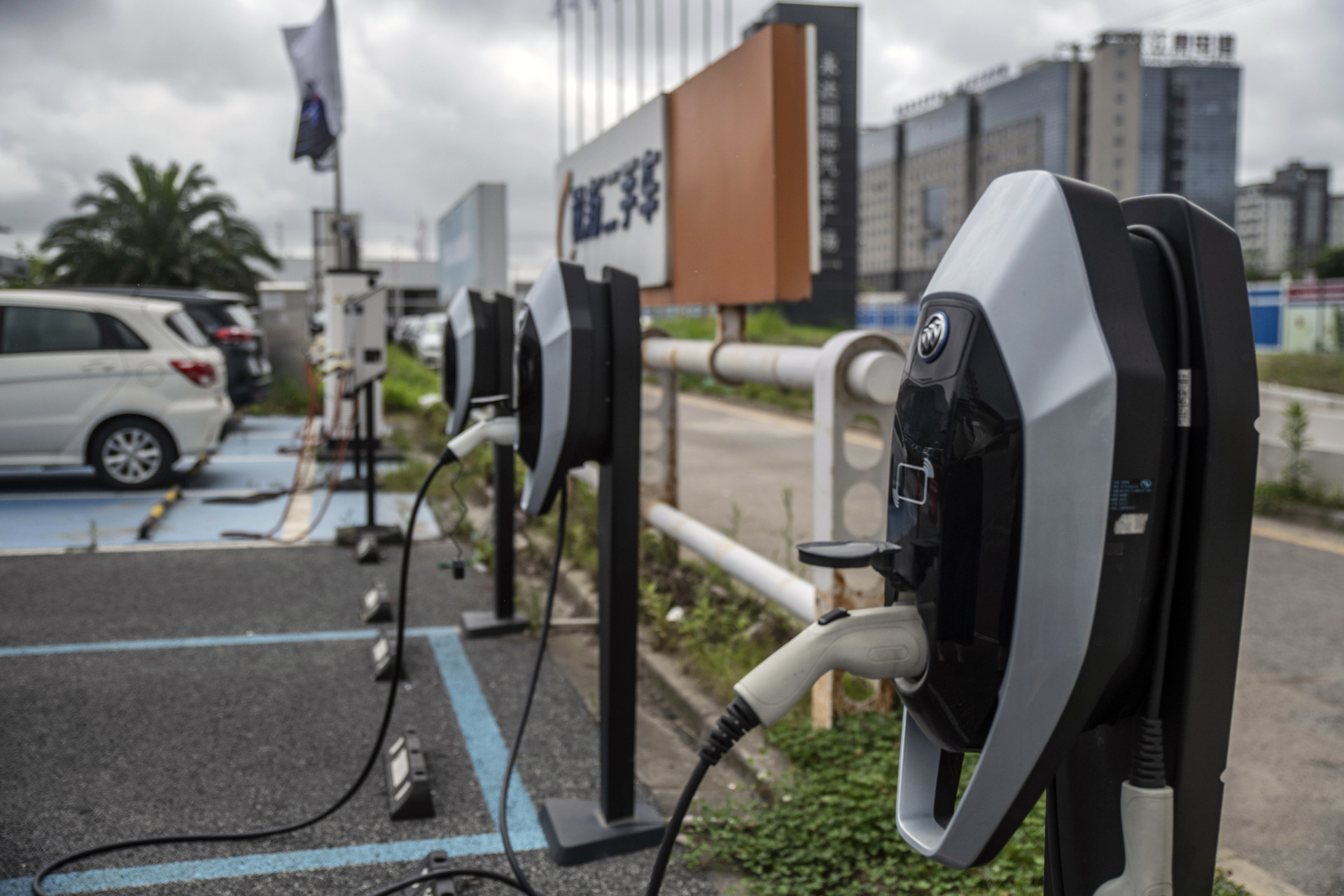 Unused charging stations for General Motors' Buick Velite electric vehicle (EV) stand outside the company's dealership in Shanghai, China, on July 17, 2019. (Gilles Sabrie/Bloomberg via Getty Images)
Unused charging stations for General Motors' Buick Velite electric vehicle (EV) stand outside the company's dealership in Shanghai, China, on July 17, 2019. (Gilles Sabrie/Bloomberg via Getty Images)
Driving Toward Higher Rates
There's an important macro-economic lesson in GM's first quarter performance. The company ended last year with the expectation that strong profits of the past few years would wane as supply came on line and consumers buckled under the weight of higher interest rates. Instead, consumer demand has remained extremely strong.
"Our consumer has been remarkably resilient in this period of higher interest rates," GM chief finance officer Paul Jacobson said during a media call, according to the Wall Street Journal.
This is yet the latest signal that the Fed's current interest rate policy is nowhere near as restrictive as Fed officials and establishment economists believe. Consumers have adjusted to the higher rates, which means they no longer have the disinflationary effect they had when the Fed was raising them through last July. At the very least, this should be a warning that it may take further rate increases to stymie demand enough to bring inflation back down to two percent.
